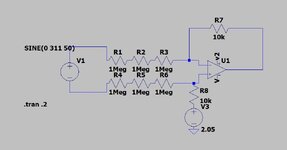thannara123
Advanced Member level 5
Hello Experts sorry for the silly questions
I want to know the dc value calculation of the following graph ,. i used an approximately 1.75 dc offset volt the for the given sinewave ,Then what will be the total dc rms value ,How to measure it ?

I want to know the dc value calculation of the following graph ,. i used an approximately 1.75 dc offset volt the for the given sinewave ,Then what will be the total dc rms value ,How to measure it ?
